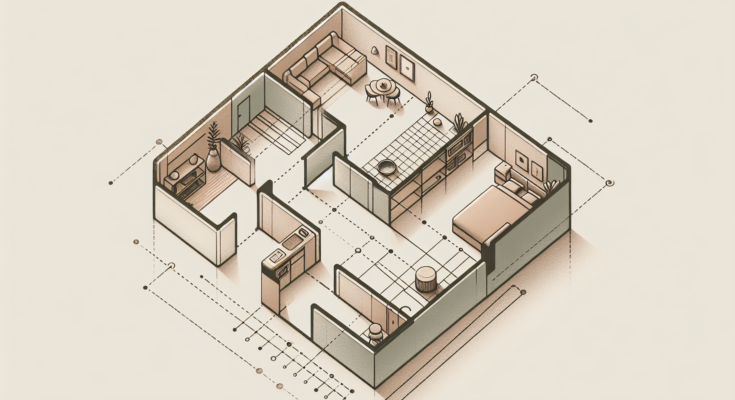Eager to build your dream home without breaking the bank? In this guide on how to save money building a house, we reveal strategic tactics that can significantly reduce construction costs. You’ll discover how to navigate budgeting, design, and material choices effectively, so your house becomes a haven of value, not a source of financial stress.
Key Takeaways
- Start by setting a realistic and carefully planned budget, anticipating unexpected expenses, and tracking your spending to optimize your investment and avoid overspending during the home building process.
- Aim for simplicity in your home design by opting for straightforward floor plans, opting for functionality over luxury to cut down on material and labor costs, and leveraging stock plans to reduce planning expenses.
- Embrace energy efficiency by investing in high-efficiency windows, insulation, and harnessing renewable resources like solar energy, which offer long-term savings, environmental benefits, and potential tax credits.
Table of contents
- Key Takeaways
- Maximize Your Budget: Strategic Planning to Minimize Costs
- Opt for Simplicity in Design: The Economical Floor Plan Choice
- Embrace Energy Efficiency: Long-Term Savings from Smart Choices
- The DIY Approach: Taking on Manageable Tasks Yourself
- Material Matters: How to Save on Building Supplies
- Collaborate with Professionals: Choosing the Right Team to Reduce Costs
- Financing Smarts: Navigating Construction Loans and Mortgages
- Summary
- Frequently Asked Questions
Maximize Your Budget: Strategic Planning to Minimize Costs
Embarking on the home building process is an exhilarating journey, yet without a strategic financial roadmap, it can quickly become a perilous quest. The cornerstone of savvy home construction lies in meticulous budget planning. A well-crafted budget is your best defense against the winds of unexpected costs and the temptation to make impromptu changes once the ground is broken.
Enlisting the wisdom of seasoned general contractors can illuminate paths to long-term savings by steering you away from costly mistakes and ensuring your plans solidify into a durable and cost-efficient home. Acting as your own contractor might be tempting, but the expertise of professionals is invaluable.
Define Your Financial Limits
Setting your financial compass involves:
- Establishing a maximum spending threshold that anchors you firmly within your economic means
- Creating a budget that reflects a realistic portrait of your income, savings, and the cap on your mortgage repayments
- Ensuring a smooth sail through the home building seas, while also focusing on saving money
Don’t forget to chart each segment of your financial map, allocating separate treasure chests for:
- the land purchase
- design
- materials
- labor
- government permits
- a reserve fund for the unpredictable twists and turns of construction.
Anticipate Unexpected Expenses
As any seasoned navigator will tell you, the seas of home construction are often fraught with hidden shoals. A savvy sailor sets aside a contingency fund to weather unforeseen storms. Some potential construction costs to consider include:
- Labor costs, which can consume between 30% to 60% of your total budget
- Material costs, which can vary depending on the quality and type of materials you choose
- Permit fees, which can add up depending on the scope of your project
- Unexpected repairs or changes to the original plan
By setting aside a contingency fund, you can navigate these potential costs and ensure a smoother construction process.
Vigilance in crew selection is paramount; steer clear of contractors who lure you with upfront cash payments, and instead seek those with verifiable credentials to prevent the all-too-common scourge of scams.
Track Your Spending
Keeping a watchful eye on the ebb and flow of your finances during construction allows you to steer your budget ship with precision. Tracking spending is not just about avoiding overspending; it’s about optimizing your investment to ensure that significant aspects like roofing and landscaping elevate the value of your home.
By casting a wide net and gathering multiple quotes, you open up a sea of opportunities for better deals that can lead to substantial savings and help you save money.
Opt for Simplicity in Design: The Economical Floor Plan Choice
As we sail into the realm of design, simplicity reigns supreme. An uncomplicated floor plan is a beacon of savings, reducing both square footage and the intricacies of construction. Ranch-style homes, with their straightforward layouts, stand as a testament to economical design.
However, for those yearning for more space, a two-story abode offers additional square footage without expanding the foundation or roof, thus conserving coins. Strategically placing wet rooms together and opting for standard sizes in windows and doors further minimizes the need for expensive customization.
Benefits of Open Floor Plans
Embracing an open floor plan offers several benefits:
- It eliminates the need for extra walls and doors, cutting down on materials and labor costs.
- It allows for better flow and natural light throughout the space.
- It creates a sense of spaciousness and openness.
- It promotes social interaction and connectivity between different areas of the home.
- It provides flexibility in furniture arrangement and room usage.
Overall, the decision to go with an open floor plan during initial construction is more cost-effective than attempting to reconfigure a closed layout later on.
Avoiding Unnecessary Add-Ons
The allure of extra features, such as a third garage or a sunroom, can quickly inflate your budget like a tempest at sea. Carefully consider the necessity of each feature and opt for simple, functional fixtures to avoid financial flotsam.
Selecting a Stock Plan
Choosing a stock plan offers several benefits:
- Ready-made designs that are tried and true
- Elimination of costs and time associated with custom plans
- A range of styles to choose from
- Potential for increased resale value due to their broad appeal
Embrace Energy Efficiency: Long-Term Savings from Smart Choices
Investing in an energy-efficient home offers several benefits, making it your dream home, including:
- Long-term reduction in utility bills
- Potential for tax credits
- Environmental sustainability
- Increased comfort and indoor air quality
While the initial total cost may be higher, these advantages make it a wise choice for those looking to make more money in the long run.
Strategic landscaping with deciduous trees and windbreaks, along with the use of light-colored hardscaping materials, can significantly enhance your home’s energy efficiency.
High Efficiency Windows and Insulation
High-efficiency windows and insulation are like the double hulls of your home, providing robust protection against energy loss. Innovations like double or triple-pane glass filled with insulating gas and special coatings reflect solar radiation, anchoring your home’s thermal performance.
This dynamic duo not only shields you from the elements but also keeps your heating and cooling costs at bay.
Renewable Energy Sources
Harnessing solar energy offers homeowners substantial benefits, including:
- Substantial savings on electricity costs
- Financial returns in the form of reduced bills
- A bright beacon for homeowners, providing a perpetual tailwind
- The ability to reap the benefits even in areas with modest solar resources, as demonstrated by Germany’s success despite its relatively low solar irradiance.
Energy Efficient Appliances
Selecting energy-efficient appliances ensures that your home is not just built on a solid foundation but also operates with precision and economy. By using energy efficient materials and appliances, you can lower your electricity bill or reduce sewer bill, providing financial relief over their lifespan.
The DIY Approach: Taking on Manageable Tasks Yourself
For those with a pioneering spirit, the DIY approach offers a voyage into cost-saving territory. By taking on manageable tasks, you can save more than just a few doubloons—you can retain as much as 10% of your total building cost. Whether it’s painting, basic landscaping, or installing fixtures, assess your skills and take the helm where you can.
Painting and Decorative Finishing
Applying your own finishing touches, like painting and staining, is like charting your own course on the open sea. An economical approach like using enamel paint over chalk putty and a limited color palette can help you navigate away from the high costs of professional finishes.
Basic Landscaping
Landscaping with local materials and maintaining your own garden or lawn is like tending to your ship’s sails—it’s essential and more rewarding when done with your own hands. This not only enhances your home’s curb appeal but also saves a treasure chest of gold.
Installing Fixtures
Installing fixtures yourself is like learning the ropes on a ship—it requires some basic knowledge and tools, but with the manufacturer’s guide and a steady hand, you can secure everything from towel racks to lighting fixtures without hiring a crew.
Material Matters: How to Save on Building Supplies

When it comes to building materials, setting your sights on cost-effective options can lead to substantial savings. Engaging in a bit of comparison shopping, keeping an eye out for clearance items or misordered products, and considering reclaimed materials can reduce your costs significantly.
Comparison Shopping at Construction Supply Stores
Diving into the world of reclaimed materials can be like discovering sunken treasure. Organizations such as Habitat for Humanity ReStores offer a trove of discounted materials that can dramatically lower your building expenses.
Exploring Local Carpet Warehouses and Wholesale Options
Buying in bulk from local warehouses or exploring wholesale options is like setting a course for trade winds—these strategies can usher in considerable cost savings, especially on items like carpeting.
Utilizing Reclaimed Materials for Unique Appeal
Sailing the seas of sustainability, reclaimed materials not only save you money but also contribute to a healthier planet by reducing waste and the need for new resources. Moreover, they add a unique flair to your home, akin to a ship’s distinctive flag.
Collaborate with Professionals: Choosing the Right Team to Reduce Costs
Partnering with the right crew is vital for a successful voyage in home building. An experienced contractor can navigate the treacherous waters of construction, ensuring that costly mistakes are avoided and that every dollar is well-spent.
The Role of a General Contractor
A general contractor is like the captain of your ship, expertly steering the project from conception to completion. Their expertise in cost estimation, materials procurement, and subcontractor management is invaluable for keeping your project on course and within budget.
Negotiating with Subcontractors
Negotiating with subcontractors is like bartering in a port town—you must be prepared to shop around for the best rates and communicate openly about your budget.
Leveraging Builder Networks for Discounts
An established builder’s network is like a treasure map to great deals on materials and services. By leveraging these connections, you can secure discounts on various aspects of the building process, such as:
- Building materials
- Tools and equipment
- Construction services
- Architectural and design services
These discounts would otherwise be out of reach for the solo navigator.
Financing Smarts: Navigating Construction Loans and Mortgages
Understanding the intricacies of financing is akin to mastering the art of navigation. Whether it’s a construction loan for the building phase or a traditional mortgage for the purchase, knowing how to manage these financial instruments can save you a bounty in the long run.
Understanding Construction Loans
Construction loans are the compass by which you chart your course through the building phase. Unlike traditional mortgages, these loans are released in increments, matching the progress of your construction milestones. However, beware the higher and variable interest rates that come with this territory.
Locking in Mortgage Rates
Securing a mortgage rate lock is like finding a safe harbor before a storm. It protects you from the turbulent market fluctuations that can occur during the construction process.
Maximizing Tax Credits for Additional Savings
Claiming tax credits for energy-efficient investments is like hoisting a sail to catch the government’s tailwinds. These incentives can significantly offset your upfront costs, making green energy solutions like solar systems not only beneficial for your wallet but also for the value of your home.
Builders, too, can navigate the seas of tax credits, claiming up to $5,000 for constructing energy-efficient homes.
Summary
As we dock at the end of our journey, we reflect on the bounty of strategies that can help save money when building a house. From charting a course with a well-planned budget to choosing a simple yet efficient design, and harnessing the winds of energy efficiency to the DIY craftsmanship and smart material sourcing, every strategy is a step towards constructing your dream home without drowning in costs. Remember, the right crew of professionals can be your compass, and understanding the currents of financing can guide you to safe harbor. Set sail with confidence, knowing that these cost-cutting strategies are the stars by which you can navigate to a home that’s both affordable and cherished.
Frequently Asked Questions
To save money during the home building process, focus on careful budgeting, opting for a simple design and open floor plan, investing in energy-efficient materials, managing some tasks yourself, sourcing affordable materials, and understanding financing options. Working with experienced professionals is also crucial.
Yes, you can save a significant portion of your total building cost, potentially more than 10 percent, by taking on manageable tasks such as painting, basic landscaping, and installing simple fixtures.
Yes, energy-efficient features are worth the initial higher investment as they can lead to long-term utility bill reductions and potential tax credits, resulting in significant savings over time.
To ensure you’re getting the best deals on building materials, engage in comparison shopping at construction supply stores, explore wholesale options and local warehouses, and consider using reclaimed materials for unique appeal and cost savings. Happy building!
When selecting a contractor or subcontractor, be cautious of those who demand upfront cash payments or lack proper licensing and insurance. It’s important to verify credentials, check references, and negotiate openly about costs for a successful partnership. Always prioritize clear communication and a good relationship with subcontractors for favorable negotiations and cost savings.




